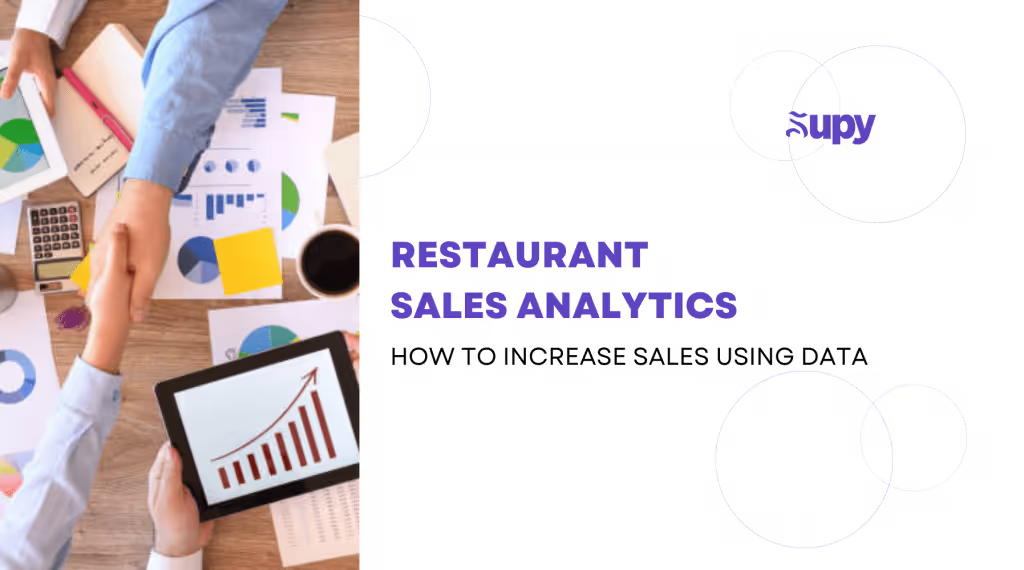Building a Centralized Supply Chain: Best Practices for Restaurant Chains
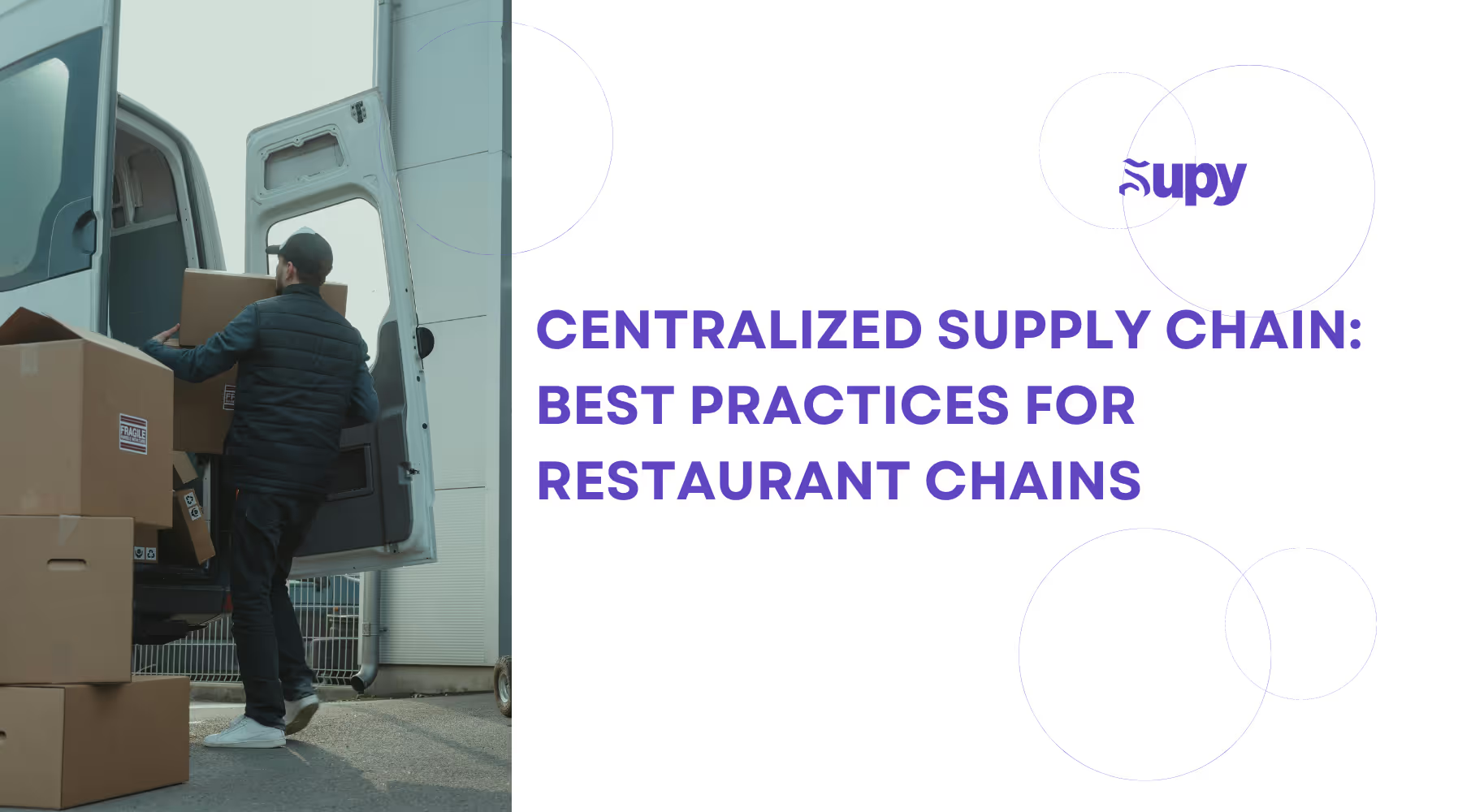
Did you know that 96% of restaurant chains struggle with supply chain inefficiencies, according to a National Restaurant Association report? Building a centralized supply chain is more than just a good practice for restaurant chains—it's essential for keeping operations smooth and costs manageable. With multiple locations to supply, having a well-coordinated system helps streamline processes, ensuring that every restaurant in the chain gets the ingredients and equipment it needs, on time.
Table of Contents
- What is Restaurant Supply Chain Management?.
- Difference between Centralized and Decentralized Supply Chain Management
- Best Practices for Centralized Restaurant Supply Chain Management.
- How Can Supply Chain Management Efficiency Boost Profitability?
- Supy: A Revolutionary Supply Chain Management Software.
- Case Study: FIYA Cut COGS by 24% with Supy.
- Conclusion.
- About Supy.
Navigating a centralized supply chain can help you handle common supply chain issues like fluctuating food prices and unexpected shortages more effectively. In this article, we'll explore key strategies for building and managing a centralized supply chain, offering practical tips to improve efficiency and reduce headaches. Dive in to discover how you can make your supply chain work better for your entire restaurant chain.
1. What is Restaurant Supply Chain Management?
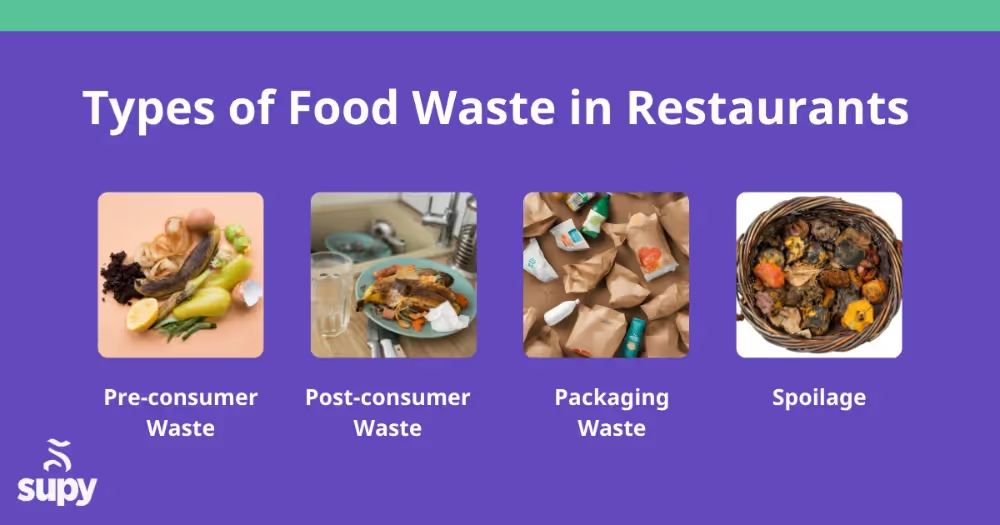
Restaurant Supply Chain Management (SCM) is all about keeping the flow of goods and services smooth: from suppliers right to your restaurant’s kitchen and dining areas. It covers everything from sourcing (raw materials, fresh ingredients, and kitchen supplies) to managing inventory and ensuring timely deliveries.
In other words, SCM ensures that your restaurant gets what it needs—like produce, meat, dairy, and other essentials—when it needs it and in the right amounts. Good supply chain management helps avoid food waste, prevents running out of key items, and keeps costs in check. This way, your restaurant operates more efficiently and provides a better customer experience.
Centralized Supply Chain Management
In a centralized supply chain, all operations converge at a single hub, often the company's headquarters. This is in contrast with a decentralized system, where each restaurant location operates independently. Major decisions, processes, and controls originate from this central point, ensuring consistency and uniformity throughout the organization. With this setup, tasks that were being duplicated again and again at different locations are now only conducted once, at a central spot. This reduction in redundancy in turn lowers overall costs, a goal every restaurant business aims to hit!
Decentralized Supply Chain Management
A decentralized supply chain distributes decision-making and operations across multiple locations. Each hub or branch manages its region, adapting to local needs and market conditions. This model is particularly effective for businesses operating in diverse markets, as it allows for flexibility and rapid adaptation to regional demands.
2. Difference between Centralized and Decentralized Supply Chain Management
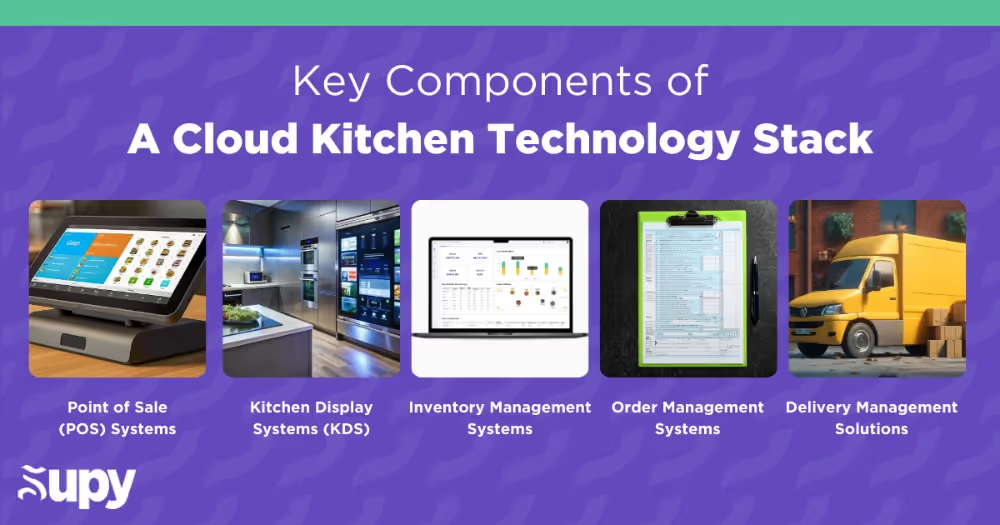
Features
Centralized Supply Chain Management
De-centralized Supply Chain Management
Decision Making
All major decisions are made at the central headquarters, ensuring consistency and uniformity across the organization.
Decisions are made at the local level, allowing for quicker and more flexible responses to market changes.
Control
There is a tight grip on operations, as all activities are monitored and controlled from a single point.
Less centralized control, as each location has autonomy over its operations.
Flexibility
Less flexible, as changes require approval from the central headquarters.
High, as local teams can adapt to regional needs and market trends.
Cost
Generally lower due to reduced process duplication and economies of scale.
Generally higher due to duplicated processes and increased overhead costs.
Response Time
Slower, as decisions and approvals need to pass through multiple levels of management.
Faster, as decisions can be made locally without waiting for approval from the central headquarters.
Consistency
High, as all processes and standards are standardized across the organization.
Lower, as standards and practices may vary across different locations.
Suitable
Small to medium-sized businesses with a limited geographic scope.
Large, multinational businesses with operations in diverse markets.
3. Best Practices for Centralized Restaurant Supply Chain Management

Handling restaurant supply chain management can be like navigating a maze—it takes smart planning, flexibility, and a focus on quality. By following best practices, you keep things running smoothly and make sure your customers have a great dining experience every time they visit.
Build Strong Relationships
A restaurant’s success isn’t just about great recipes—it's also about reliable partnerships with suppliers. Building lasting connections with your vendors can have a significant impact on the success of your business.
Each supplier brings something unique to the table, and understanding their strengths (and limitations) helps restaurants plan better, ensuring that deliveries are timely and issues in the supply chain are managed without a hitch.
Open, honest communication is key to these relationships. Regular touchpoints, addressing problems right away, and showing appreciation build trust. When suppliers know they’re valued, they’re more likely to go the extra mile to support the restaurant’s needs.
Invest in Environmental and Social Sustainability
While compliance with laws and regulations is essential for supply chain sustainability, leading in this area can also significantly enhance a company's brand and bottom line. In fact, 43% of consumers expect businesses to take responsibility for their environmental impact, and sustainable products are growing 5.6 times faster than non-sustainable ones. This clearly demonstrates that customers are increasingly focused on the sustainability of the brands they support.
The goal of sustainable supply chain management is to minimize its environmental, social, and economic impacts. This involves finding solutions to environmental and social challenges, meeting regulatory requirements, and partnering with suppliers that prioritize fair labor conditions and eco-friendly practices.
Align the Supply Chain Team
A supply chain can become inefficient when its various components operate in isolation. This can lead to communication breakdowns, errors, and inconsistent practices. How can we improve efficiency?
One effective approach is to create a dedicated role to coordinate activities and communication across the business units. This individual would ensure that supply chain processes are standardized and that team leaders are aligned. They would facilitate discussions on current and proposed processes, address strengths and weaknesses, and oversee the potential impact of changes.
Be Aware of Risk Management
In the restaurant business, being prepared for the unexpected isn’t just smart—it’s necessary. A forward-thinking approach to risk management can mean the difference between staying ahead or falling behind.
Depending on just one supplier is risky. Having multiple options allows a restaurant to quickly adapt if one supplier faces issues, keeping the ingredients coming. It also opens the door to better pricing and helps avoid supply problems.
With the world more connected than ever, global events can impact local supply chains. Whether it's political shifts, health crises, or trade deals, these can all affect the flow of goods. Staying informed helps restaurants prepare for disruptions and pivot when needed.
Focus on Sustainability
Today's diners care about more than just good food and atmosphere—they're paying attention to the environmental impact of their meals. Making sustainability part of the supply chain isn't just the right thing to do, it's also smart business.
Sourcing locally cuts down on transportation emissions, boosts local economies, and often brings in fresher ingredients. Plus, shorter supply chains mean fewer disruptions, making local sourcing both eco-friendly and practical.
Food waste isn't just bad for the environment, it's costly for restaurants. Using efficient inventory systems can help reduce waste by ordering and using ingredients more effectively. Strategies like First-In-First-Out (FIFO), routine inventory checks, and using tech for demand forecasting can help cut waste, benefiting both the environment and the bottom line.
Regular Audits and Reviews
In restaurant supply chain management, what worked well last month might not be the best strategy today. That's why keeping regular checks and reviews is so important. Staying on top of your own policies and regulations can help keep things on track and make sure the operation of all your locations is running smoothly and can adapt to changes.
Regular checks give a clear idea of how the supply chain is doing. These checks can spot where things are going well, where there might be problems, and where we can improve. Whether it's a slow supplier or inventory management problems, audits help identify discrepancies in the system.
4. How Can Supply Chain Management Efficiency Boost Profitability?
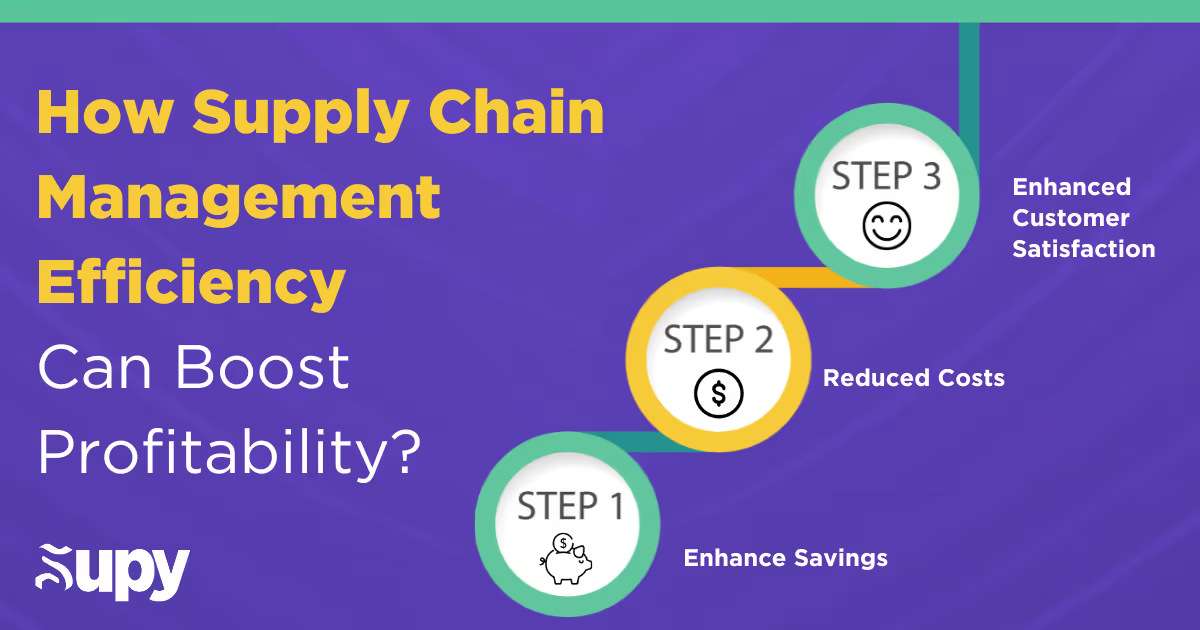
At the end of the day, a restaurant chain is also a business. And like any other business, achieving success in sales and profits is a top priority.
Boosting customer satisfaction and loyalty starts with a smooth supply chain. When your supply chain runs efficiently, you can meet customer needs quickly and effectively, which in turn can lead to better sales.
Here’s how a streamlined supply chain can help increase your profits and sales:
Enhance Savings
Making more money can be as easy as cutting costs on supplies and fixing how you manage your supply chain. Start by checking if you can find better prices on ingredients or kitchen stuff somewhere else.
Smart buying can also help a lot. Think about negotiating better payment terms, buying in bulk, and going over your spending to find ways to save. For example, you might offer to pay early for a discount or work out a long-term deal with your suppliers.
Reduced Costs
Making your supply chain better can really help with cutting costs and doing things more efficiently. By improving everything from getting raw ingredients to managing inventory, restaurants can see real savings.
Start by setting up a central buying system for all your places. This helps you negotiate better prices with suppliers and lower costs. Also, don't forget to talk to your transportation people about shipping rates. You might be able to get best deals and reduce your logistics costs.
Enhanced Customer Satisfaction
A good supply chain makes sure you have the right stuff on hand to give your customers exactly what they want, which makes them happier.
When customers are happy, they keep coming back, tell their friends, and help your sales go up. To make this happen, focus on getting your orders right every time, speeding up delivery, and keeping your product quality the same.
5. Supy: A Revolutionary Supply Chain Management Software
Supy revolutionizes how restaurant chains manage their supply chains by offering a centralized platform that streamlines procurement, inventory management, and supplier communication.
With real-time data and automation, Supy helps restaurants reduce costs, eliminate inefficiencies, and enhance overall operations, ensuring a smooth and scalable supply chain.
Key Features of Supy for Supply Chain Management
- Streamlined Procurement Process: Supy offers a centralized platform where restaurant chains can manage orders from multiple suppliers, standardizing the procurement process to reduce errors and improve efficiency. By automating repetitive tasks, Supy ensures timely and accurate purchase orders across all locations, simplifying the ordering process and boosting overall operational effectiveness.
- Real-Time Inventory Management Software: Supy’s system lets restaurant chains track inventory in real-time across different branches, providing a clear view of stock levels and preventing overstocking or stockouts. By using centralized data and analytics, Supy helps forecast demand more accurately, allowing restaurants to optimize inventory levels and reduce food waste.T
- Supplier Relationship Management: Supy provides a platform that allows restaurants to manage multiple suppliers, track performance, and ensure compliance with food safety and delivery standards. It helps improve communication, negotiate better deals, and monitor supplier accountability. By centralizing the supply chain, the platform enables early identification of risks, for example, supplier issues or logistical challenges, and supports contingency planning.
- Cost Efficiency and Reduction: Supy helps restaurants control costs by centralizing purchases across all locations, allowing for bulk buying and better pricing negotiations. The platform also provides detailed reports on purchasing patterns, helping to identify unnecessary expenses and potential areas for cost reduction.
- Comprehensive Reporting and Analytics: Supy provides analytics on purchasing trends, supplier performance, and cost control, helping restaurant chains make data-driven decisions to optimize their supply chain. The platform also allows for custom reports, enabling restaurants to monitor performance and identify bottlenecks or inefficiencies in their system.
Boost Profitability with Supy
By optimizing procurement, reducing food waste, and enabling bulk purchasing, Supy; The leading supply chain management software helps restaurants improve their bottom line. The platform’s data-driven insights and cost-reduction strategies contribute directly to boosting profitability, making it easier for restaurant chains to manage expenses while maintaining operational efficiency.
6. Case Study: FIYA Cut COGS by 24% with Supy
Running a restaurant like FIYA means juggling endless tasks, but owner Hattem Mattar faced a major challenge—too much time spent on manual tasks and no clear insights into supplier performance or purchasing patterns. His team was overwhelmed, spending 100+ hours each month on invoicing, stock counts, and tracking wastage, all without reliable data to act on.
Supy changed everything for FIYA by centralizing the supply chain and giving the team access to real-time, accurate data. Key features included:
- Daily Invoicing & Wastage Recording: Supy’s team handled the paperwork, saving FIYA’s staff over 100 hours each month.
- Mobile Stock Management: Supy’s Parallel Count feature cut stock counting time in half with 3x fewer errors.
- Supplier Performance Dashboards: Immediate insights into supplier deals and cost savings, with alerts for discrepancies.
With Supy, FIYA achieved:
- 24% reduction in COGS by optimizing deals, recipes, and suppliers.
- 100+ hours saved monthly on manual labor.
- 3% stock variance thanks to frequent, accurate counts.
“We identified discrepancies the second we turned Supy on. It was like magic,” said Hattem. Supy gave FIYA the clarity and control needed to thrive in a fast-paced environment.
7. Conclusion
Using the best ways to manage your restaurant supply chain, like guessing how much you'll need and watching your inventory, helps you build a cost-effective strategy.
Managing your restaurant supply chain is important for smooth operations and needs good communication at every level. A well-run supply chain helps cut down on inventory costs by giving you up-to-date details on suppliers, prices, and food expenses.
Sharing this information with your team makes it easier to manage everything and lets you quickly tell customers when a menu item is out of season.
8. About Supy
Tired of juggling inventory spreadsheets and worrying about supply chain operations? Meet Supy, your new best friend. This smart supply chain management software keeps tabs on your stock, tells you when you need to restock, and even helps you cut down on waste. It’s like having a super-powered inventory management assistant.
Want to learn how to save a bundle on food costs? Grab our free ebook, “The Ultimate Guide to Reducing Food Costs in Multi-Branch & Enterprise Restaurants.”
Ready to see Supy work its magic? Book a demo today and gain a competitive advantage as your restaurant operations get a whole lot smoother.




